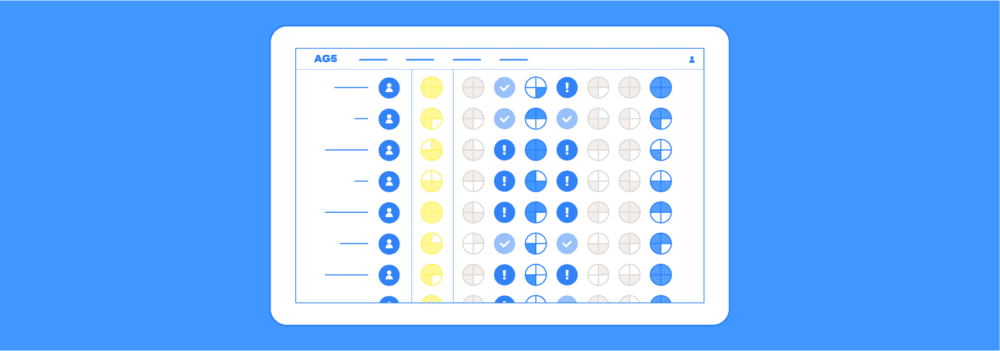So, what’s the difference between a ‘skill’ and a ‘trait’?
During this article, we unravel the variation between skills and traits, shedding light on their individual attributes and their vital roles in personal and professional growth.

Skills and traits are the building blocks for success and performance in life. However, there’s a difference between these two terms. This article explains in detail the difference between skills and traits, illustrated with several practical examples.
In a nutshell: Skill vs. TraitCopied
Although the terms ‘skill’ and ‘trait’ are often used interchangeably or in the same breath, there’s actually quite a significant difference.
In short, we’re born with traits and can continue developing these further throughout life. Skills, on the other hand, are something we learn later in life.
What are traits?
Traits by and large have nothing to do with what we learn during our lives. They’re the mental and physical ‘tools in a toolbox’ that we’re born with. But that doesn’t mean we can’t expand on and perfect our traits with practice or training, yet they essentially remain reliant on our natural talent.
Traits vary greatly from person to person. There are those of us who are great with their hands, while others are all thumbs but can absorb information at lightning speed.
Examples include:
- language(s)
- integrity
- persuasion
- responsibility
- independence
- accuracy
- resolve
- organization
- creativity
What are skills?
Skills are generally tasks or activities that we learn throughout life. Examples include methods and techniques learned as part of an academic or vocational education program.
Let’s take a look at a few examples:
- Programming is a skill you can learn if you have the aptitude and inclination for IT matters.
- Editing is a skill you can use to improve written communications to make them more readable.
- Selling is a skill that relies on your powers of persuasion.
- Stitching a wound is a practical skill taught as part of training to become a doctor or vet.
- Playing a musical instrument is also a skill you can learn. How good you ultimately become depends on how much you practice, but also on your innate musical talent (trait).
Read our article, What are skills? Explanations & examples

What’s the connection between skills and traits?Copied
There is, of course, a connection between skills and traits. You could say that the extent to which someone can hone and perfect a skill relies on their innate underlying traits.
Let’s look at a few examples:
- Someone who is assertive will probably be better able to give presentations or sell products than someone who is very introverted.
- Someone with a natural talent for language(s) has an advantage when it comes to communication-related tasks, for example writing a good press release or a scintillating company brochure.
- Someone with a good eye for detail and composition will probably be a better photographer, even though anyone can learn to operate a camera, for example adjust focus, shutter speed, aperture, etc.
Mapping & visualizing skillsCopied
It’s useful for several reasons for organizations to know exactly who has which skills and traits.
- Suppose you’ve just won a lucrative deal – you’d want to put together a kick-ass team that meets all the project’s requirements, wouldn’t you? This would be a piece of cake if you already had all your employees’ skills and traits mapped out in advance.
- Or what if a key employee were to fall ill or had to take leave? A snapshot of all your employees’ skills would make it a cinch to find the best replacement.
- By mapping skills, you’ll also discover which are missing. Armed with this information, you can then adjust your recruitment and selection efforts to fill existing or emerging skills gaps.
- What’s more, mapping skills also makes it really easy to set up custom training programs for each of your employees.
One of the best ways to do this is by creating and maintaining skills matrices. These matrices display employees’ skills and proficiency levels.
It’s most common to list all your staff members down the left‑hand column and all the skills they need to be able to perform in a certain role along the top row.
But it’s equally acceptable to swap these around. Within the body of the matrix, you then enter each staff member’s proficiency level in relation to that required to perform the task in question. Generally, a symbol, percentage, or rating (good/moderate/average/poor) is used to express the level of knowledge attained and/or proficiency demonstrated.

Anytime, anyplace, anywhereCopied
Skills and traits together form the foundation for acquiring professional knowledge and expertise. Traits relate primarily to natural talent, but also jointly determine the speed with which someone picks up a new skill – as do motivation, inquisitiveness, and learning opportunity.
AG5’s software gives you unrivaled insights into your workforce’s skills and traits. It allows you to access, view, and edit data in real time – anytime, anyplace, anywhere – without having to wade through a quagmire of overly complex and error-prone Excel spreadsheets.
Drop us a line or schedule a demo to find out more about AG5’s skills management software.

